

Damion Smy
Hyundai i30 N TCR celebrates 10 years of ‘N’ with Gran Turismo 7 debut
2 Days Ago
Skoda is farewelling the current Fabia with a limited Run-Out Edition. It's still a decent little hatch, but you'll need to pay for a full equipment list.

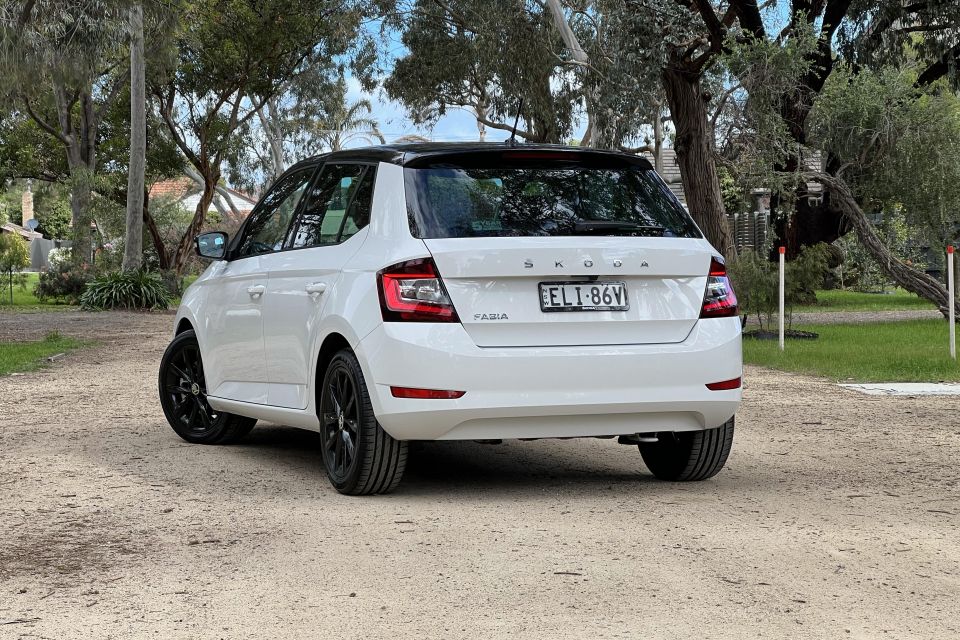

Contributor
New from
$23,790
excl. on-roads

Contributor
New from
$23,790
excl. on-roads


Contributor
New from
$23,790
excl. on-roads

Contributor
New from
$23,790
excl. on-roads
Quickly see how this car stacks up against its competition. Select any benchmark to see more details.
Where expert car reviews meet expert car buying – CarExpert gives you trusted advice, personalised service and real savings on your next new car.
Skoda is getting ready to welcome a new small Fabia hatchback to Australia, but the current model isn’t quite done with yet, so the brand’s local arm is sending it off with the aptly-named Run-Out Edition.
Available with a choice of two engines, and in wagon and hatchback bodies, the Skoda Fabia Run-Out Editionpacks a smattering of extra features, some unique exterior add-ons, and the warm, fuzzy feeling that comes with buying a special edition.
When it arrives in Australia, the 2022 Skoda Fabia hatchback will bring with it a bigger body and a more upmarket interior. It’s also likely to be more expensive than the current model, which is now seven years old and shares its PQ26 bones with the previous Volkswagen Polo.
Does the Fabia Run-Out Edition pack enough standard equipment and a sharp enough price to make it a smart buy, or should you wait for its successor to touch down during the first half of 2022?

Skoda has four variants of the Run-Out Edition, starting with the 70kW manual hatchback at $21,990 drive-away and extending to $25,990 drive away for the 81kW dual-clutch wagon at $25,990 drive-away.
Our Fabia Run-Out Edition 81kW DSG hatchback will set you back $24,990 drive-away.
A full price list is below:
All prices are drive-away.
Although the city hatchback space isn’t teeming with options, there are a few rivals out there for the Fabia.
Kia will sell you a Rio GT-Line with a turbocharged 1.0-litre engine for $25,990 drive-away, while the Volkswagen Polo 85TSI Style automatic will set you back $25,690 before on-roads (or just over $30k drive-away, $32k with the Driver Assistance pack).
Mazda hasn’t confirmed pricing for the updated 2 hatchback, but the current Mazda 2 G15 GT has a $25,990 price tag before on-roads.
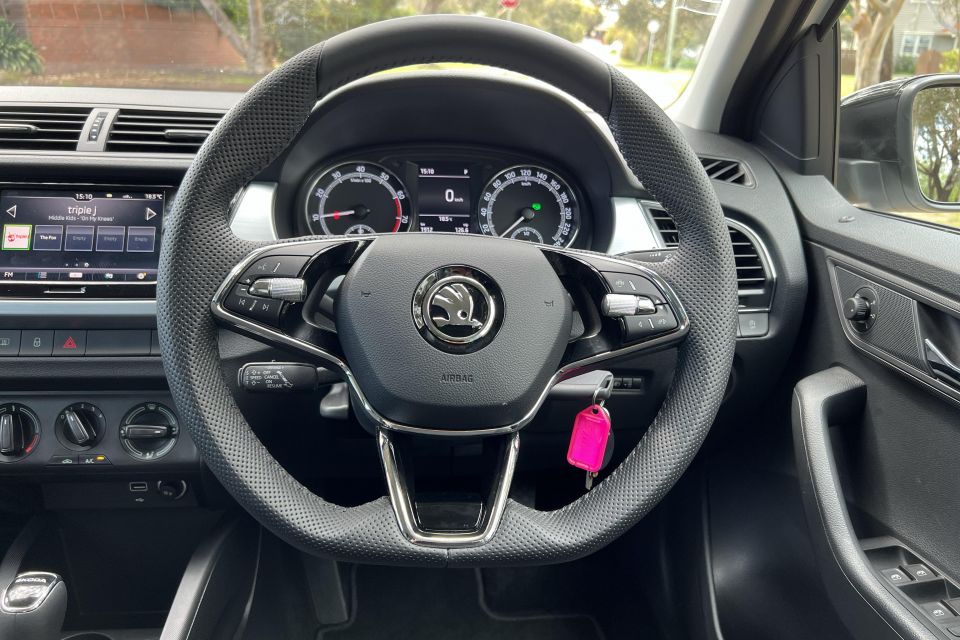
Buy your new car without the stress. It's fast, simple and completely free.

Great service from Travis and team, second time I have used this business would not hesitate to recommend them to anyone
Craig C.
Purchased a Ford Ranger in Sunshine Coast, QLD
CarExpert helped Craig save thousands on his Ford Ranger, now let us save you on your next new car.
Find a dealStandard equipment in the Fabia Run-Out Edition includes:
There are a few things missing from that list. Keyless entry and start, automatic (and LED) headlights, and safety kit such as blind-spot monitoring and rear cross-traffic alert are notable absences.
You’re able to add some of them to the mix with the Premium Pack, which gets you:
Although it means you can make your Fabia pretty well equipped, it also turns it from what’s quite a sharply-priced little hatchback into something that’s priced largely in line (or slightly below) its more modern rivals.
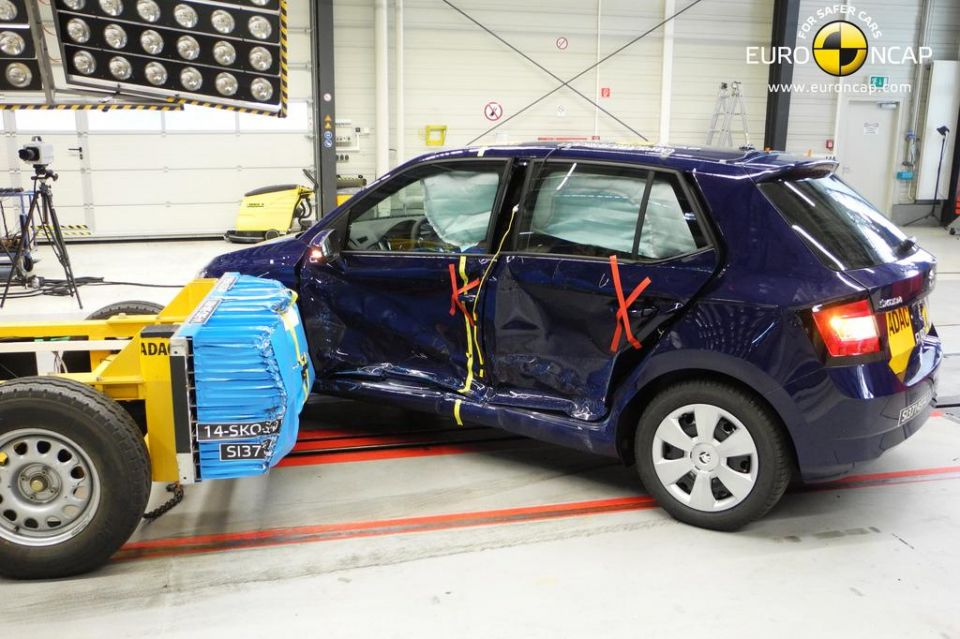
The Skoda Fabia has a five-star ANCAP safety rating based on testing carried out by Euro NCAP in 2015.
It scored 13.68 per cent on the Frontal Offset test, 15.49 out of 16 on the Side Impact test, and two out of two for the Pole test.
Six airbags are standard, along with autonomous emergency braking.
Opting for the Premium Package gets you blind-spot monitoring and rear cross-traffic alert.
Because it was tested before Euro NCAP and ANCAP’s percentage-based safety scores, the Fabia’s safety rating in this review is based on its five-star score and gains points for the active safety features it has.
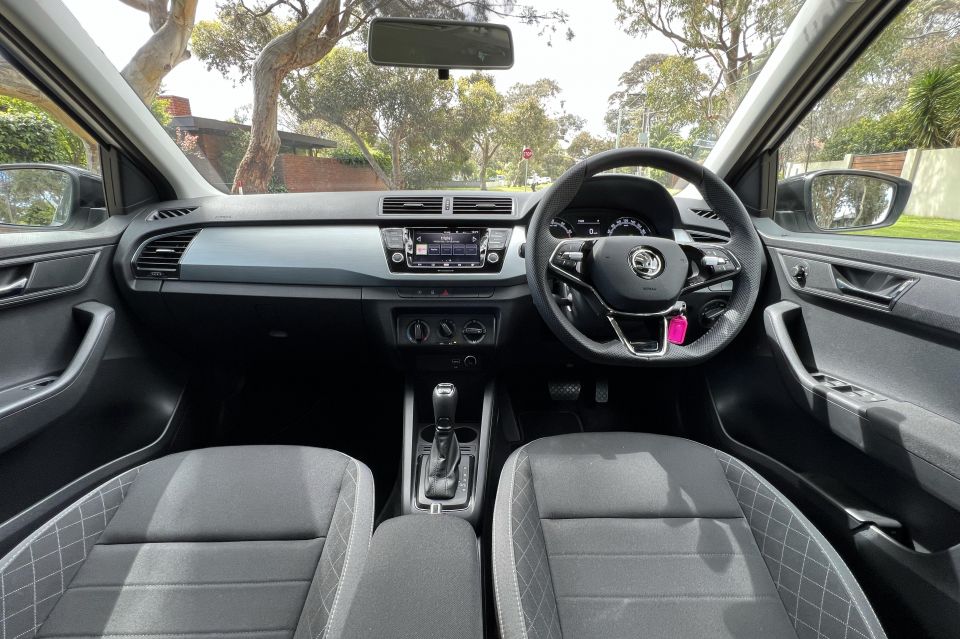
Hopping into the Fabia is a reminder of how far Skoda interior design has come in recent years.
It feels miles removed from the flashy new Octavia or even the similarly-priced Karoq SUV, with a utilitarian design and swathes of hard plastic. None of its rivals are the last word in tactility, but even the Kia Rio is more interesting to look at.
The positives? The simplicity is refreshing after driving countless new cars with wacky ideas about how functions that used to be simple can be more complicated. There’s hard buttons for everything, and hardly any gloss black trim. Phew.
The negatives? The 6.5-inch infotainment screen is tiny compared to what you get in a Polo, you miss out on the digital dials now standard across the Skoda range, and it’s styled more like a Czech taxi than an exiting European hatch for trendy city dwellers.
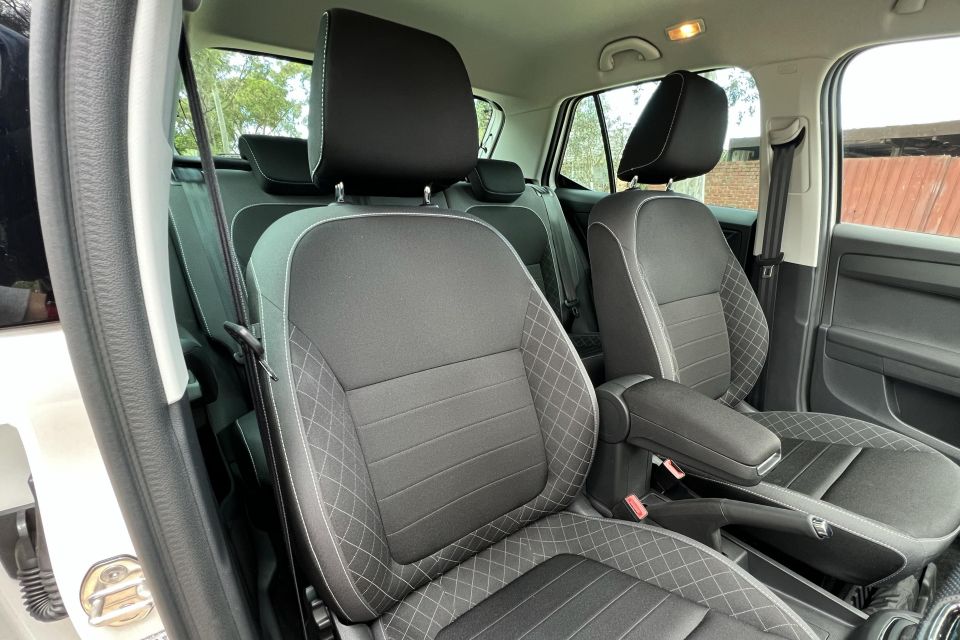
Fundamentally, Skoda doesn’t need to change much for the next-generation car. The driving position is excellent for such a small hatch, with acres of legroom and headroom for taller drivers, and the plus-sized windows mean outward visibility is excellent.
Blind-spot monitoring is less necessary when you’ve got a panoramic view out the rear windows on a head check.
Skoda has also slotted its latest steering wheel into the Fabia, which is a nice touch. It looks interesting and feels great in your hands, like it’s come from something far more expensive.
Although it’s lacking screen real estate, there’s not much wrong with the Fabia’s infotainment system. It’s dead easy to use, and the wired smartphone mirroring means you can always hook up your iPhone (or Android phone, nerds) for a more modern interface.
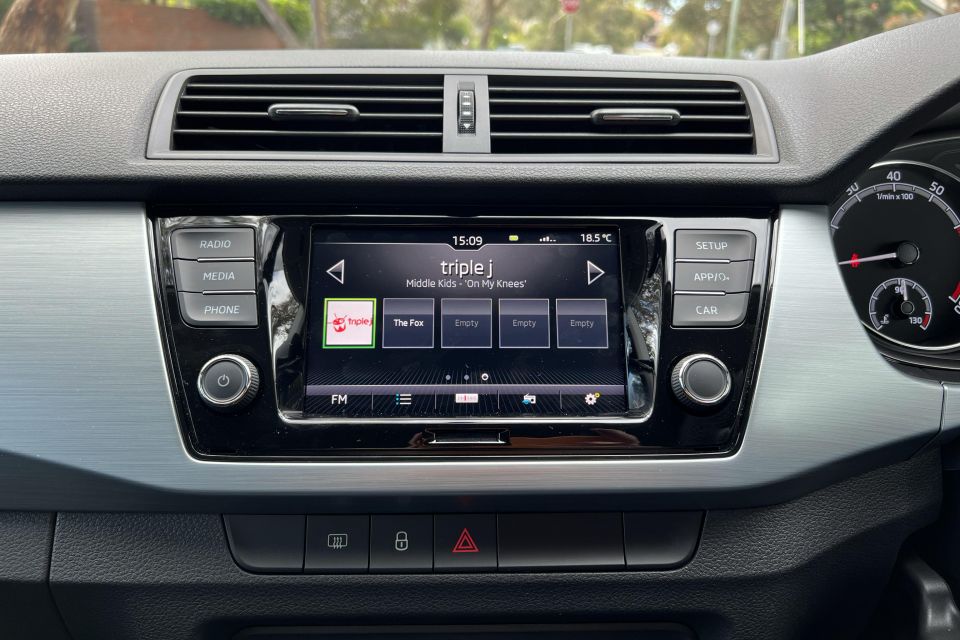
Likewise the instrument binnacle. The dials don’t have the same wow factor as the Virtual Cockpit digital display in newer Skoda models, but they’re easy to read at a glance – and there’s a massive digital speedo between the analogue speedo and rev counter.
Storage is decent, albeit not standout up front. There’s an open pocket beneath the dash, and two small cupholders that are perfect for piccolo drinker like me, but might not be much use to anyone who orders coffee by the gallon.
There’s also space for sunglasses or garage keys in the slim central armrest, and a sunglasses holder on the roof to support the spacious door pockets.
Rear occupants are treated to heaps of headroom thanks to the Fabia’s almost van-like roofline, and lots of light from the tall windows. There’s even dual USB-A ports back there, although you miss out on vents.
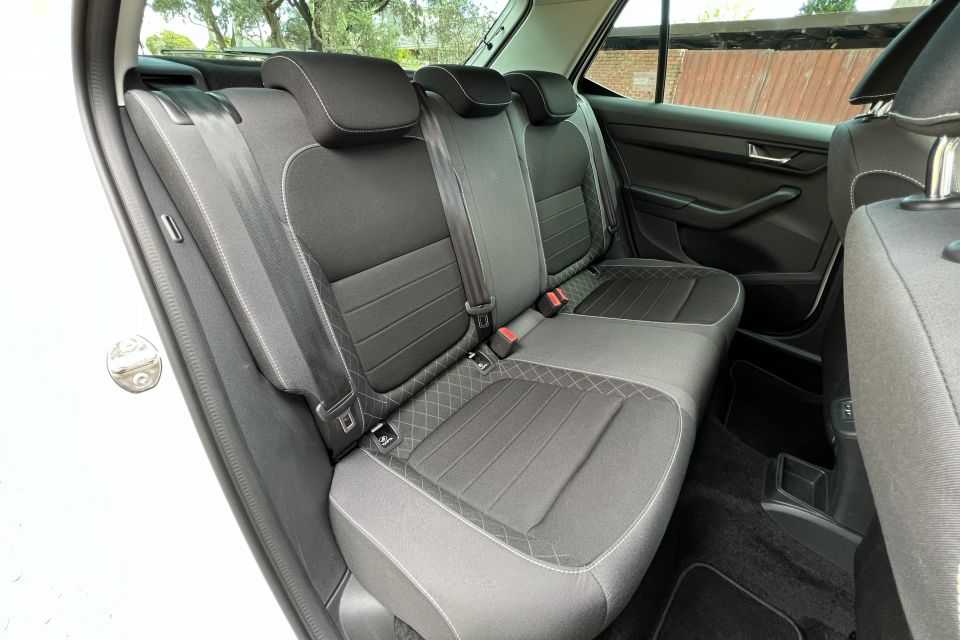
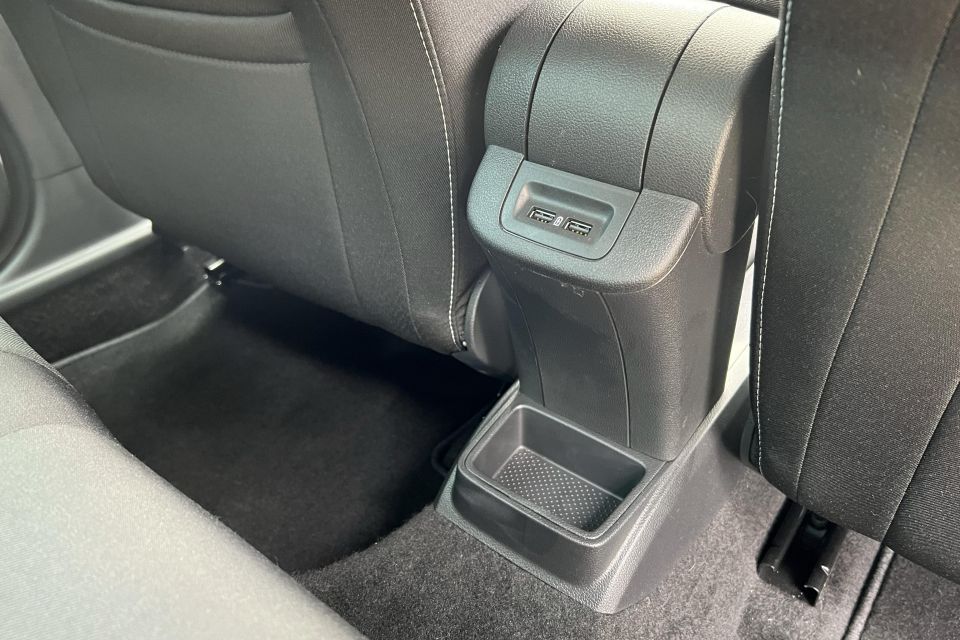
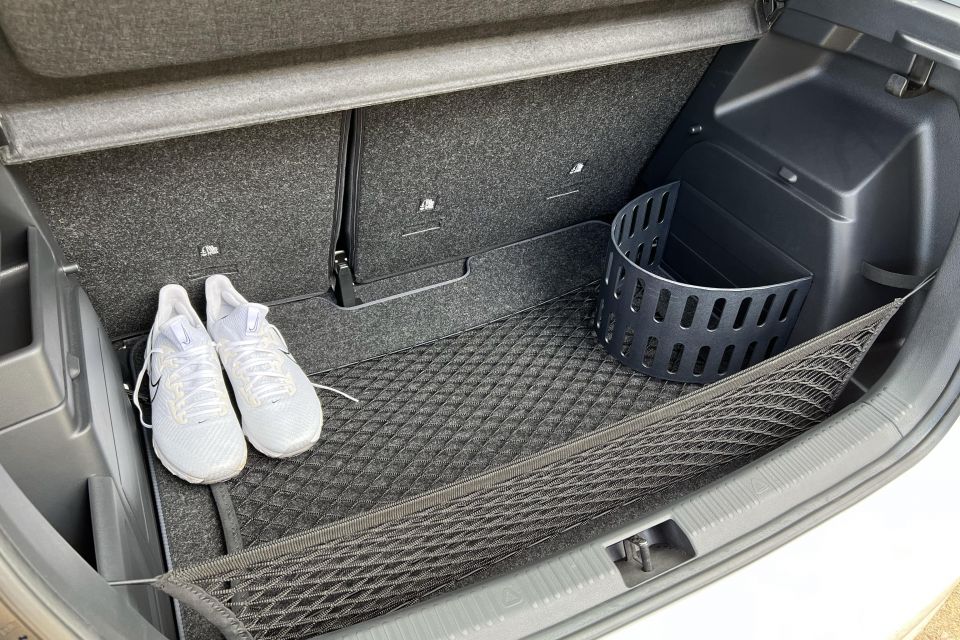
Legroom isn’t a traditional strong point for city cars, and that rings true here. It’s a space best reserved for children, or smaller adults sitting behind smaller adults. Dual ISOFIX points on the outboard seats and a trio of top-tether points are on hand for child seats.
There’s no fold-down central armrest, nor cupholders back there. That’s pretty common for the city car class.
The boot is versatile, as we’ve come to expect of Skoda. There’s enough netting back there to snare Moby Dick, and a clip-in plastic divider you can use to stop shoes or shopping bags sliding around around the boot. You also get a pair of plastic pockets in the left-hand side.
Claimed boot space is 330L with the rear seats in place, expanding to 1150L with the bench folded 60/40. The boot space itself has a low, flat floor, but older buyers might not like the lip you need to drop bags over, and avid antique buyers should note there’s a hump in the floor with the seats folded.
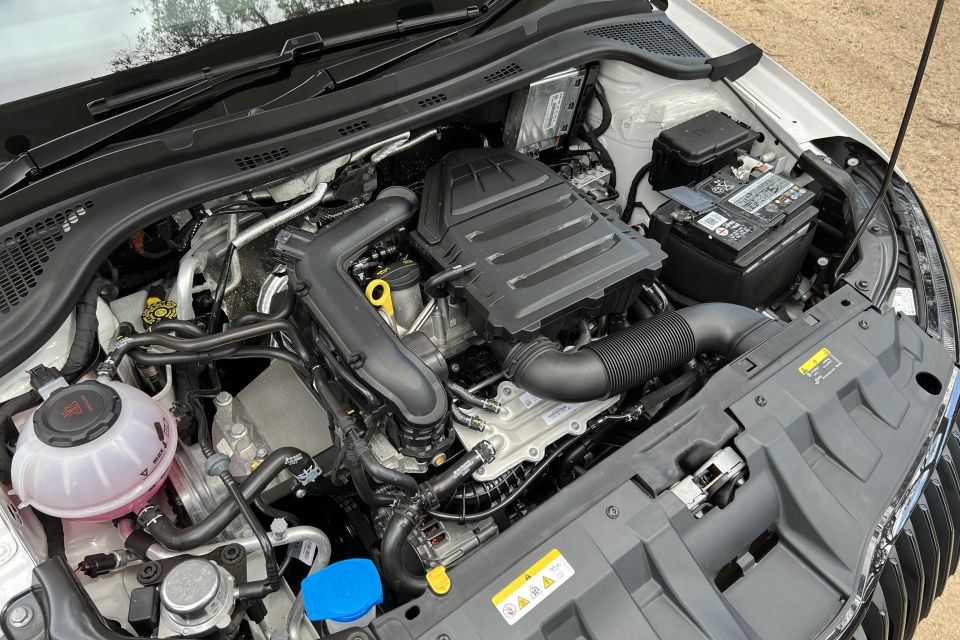
Power in the Fabia Run-Out comes from a 1.0-litre three-cylinder turbocharged petrol engine with 81kW of power and 200Nm of torque.
It’s mated with a seven-speed dual-clutch transmission, and sends power to the front wheels exclusively.
Claimed fuel economy for the Fabia 81TSI is 4.7L/100km on the combined cycle, but we saw 6.0L/100km in our week behind the wheel. The Run-Out Edition drinks 95 RON premium unleaded fuel, and has a 45L fuel tank.
Models with a five-speed manual get a detuned version of the same engine with 70kW and 170Nm.
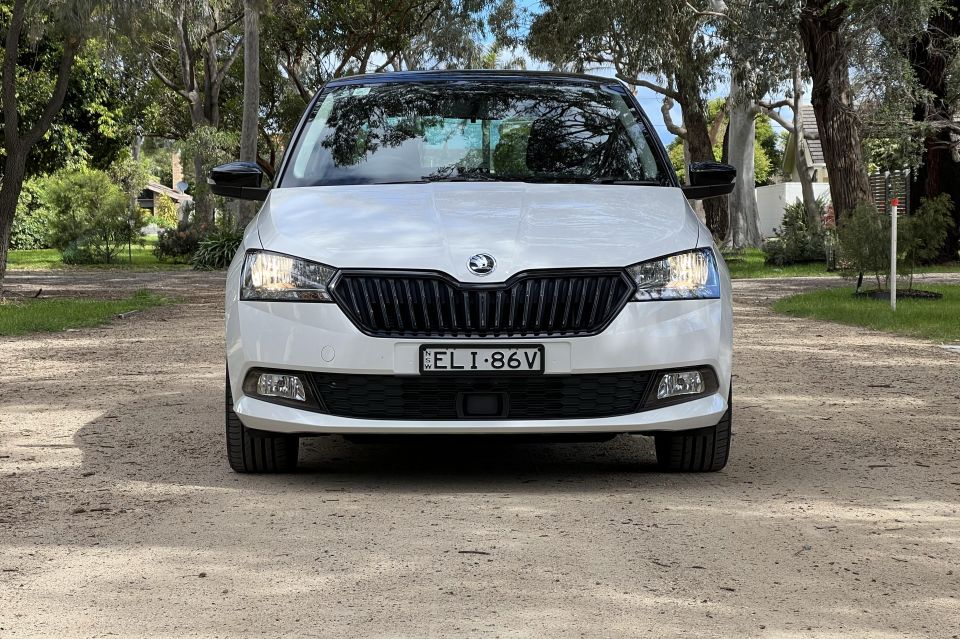
Measuring up at 3997mm long and 1732mm wide, the Fabia is 56mm shorter and 19mm narrower than the latest Volkswagen Polo, and 111mm shorter and 48mm narrower than the all-new Fabia.
It’s properly compact, the Fabia Run-Out Edition, which makes it a cinch to pilot in the city. The tall windows and upright proportions mean you know exactly where its corners are, and the light steering makes squeezing into tight parking spaces simple.
You’ll need to adjust to the washed-out reversing camera, but there’s no excuse for dinged wheels or bumpers.
Although it’s down 4kW on the three-cylinder engine previously offered in the Kamiq, the Fabia’s little turbocharged mill doesn’t feel meaningfully slower or less powerful.
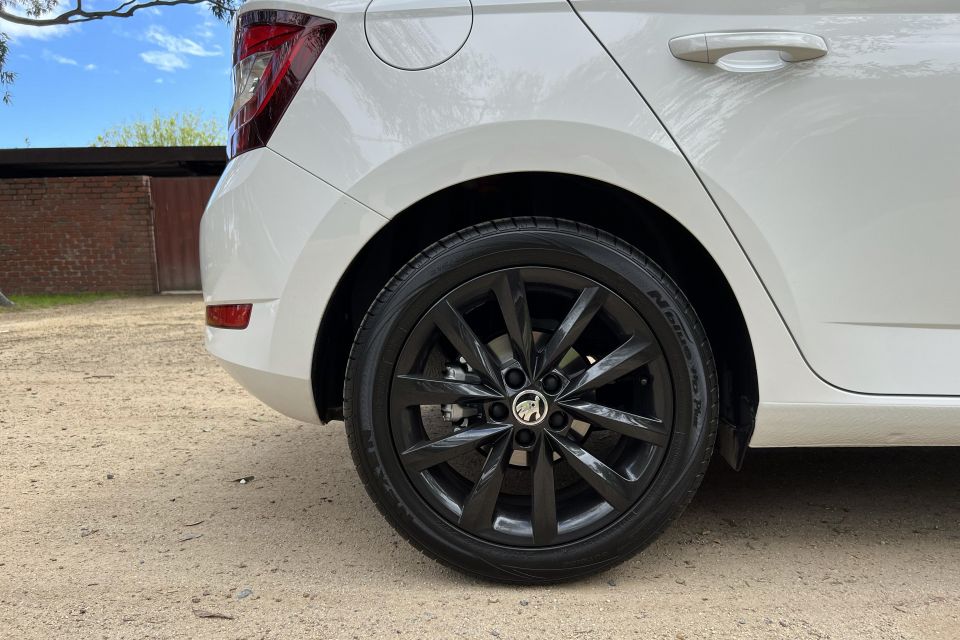
That’s partly down to the fact its 200Nm torque peak is available from 2000rpm, and partly down to the fact the Fabia weighs less than 1100kg.
There’s a hint of hesitation off the mark, especially when you have automatic start/stop enabled, thanks to the seven-speed dual-clutch transmission. You need to adjust your driving after hopping out of a car with a more conventional torque converter, but the learning curve isn’t too steep.
Once you’re rolling the engine and transmission work together effortlessly. This older powertrain doesn’t feel as keen to shuffle through the gears as its newer counterparts, so it feels peppy more of the time – you’re not left in fifth gear with the engine spinning just above idle.
Put your foot down hard and it smartly drops one, two, or three gears and revs smoothly towards the redline, backed by an offbeat three-cylinder growl.
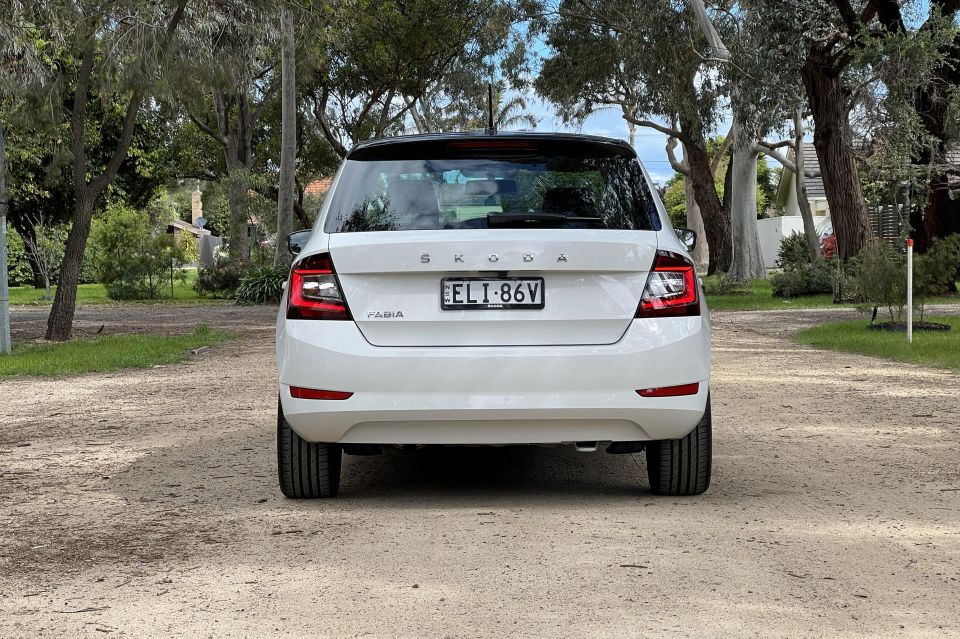
The ride quality is generally good, soaking up speed bumps and smaller potholes without breaking a sweat. Occasionally it feels its age, though.
Bigger, hard-edged hits thump into the cabin harder than they do in the latest Volkswagen Group cars, and they make more noise when they do. It’s far from unbearable, but the way the Fabia crashes and bashes over some bumps is what ages it most.
Even though it has a compact footprint, the Fabia feels at home on the highway. It’s not buffeted or bullied by strong winds, and the engine settles down quietly at a 100km/h cruise.
The lack of lane-keep assist might be a negative for some buyers, but if you’re planning to do lots of highway miles we’d recommend looking at something a bit bigger and more powerful anyway.
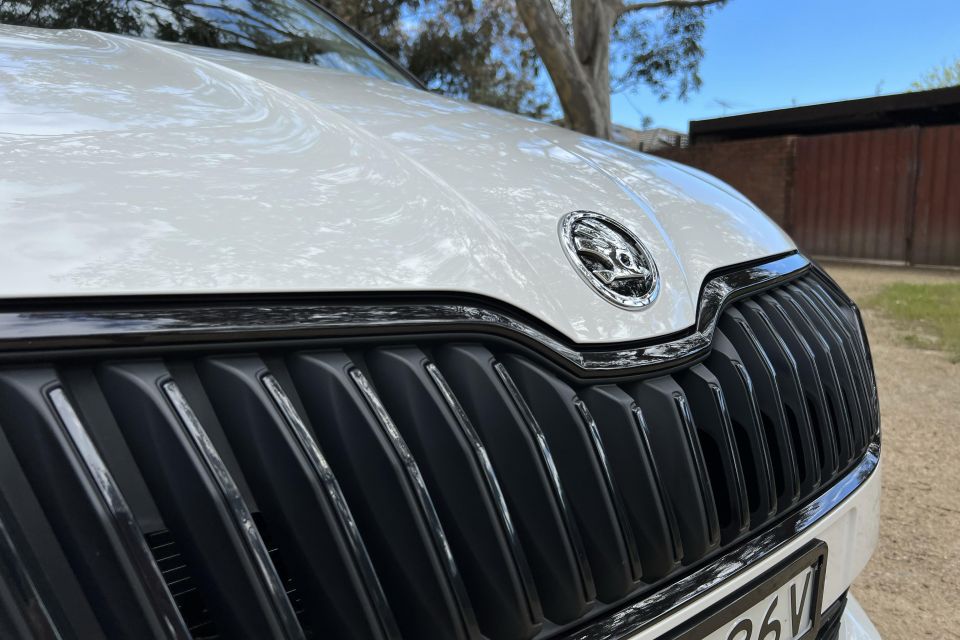
Maintenance in the Fabia is required every 12 months or 15,000km.
A three-year prepaid service pack costs $750, a five-year package costs $1350, and a seven-year package will set you back $2100.
As with all Skoda models, it’s backed by a five-year, unlimited-kilometre warranty – or a seven-year warranty if you purchase a seven-year service package before the end of 2021.
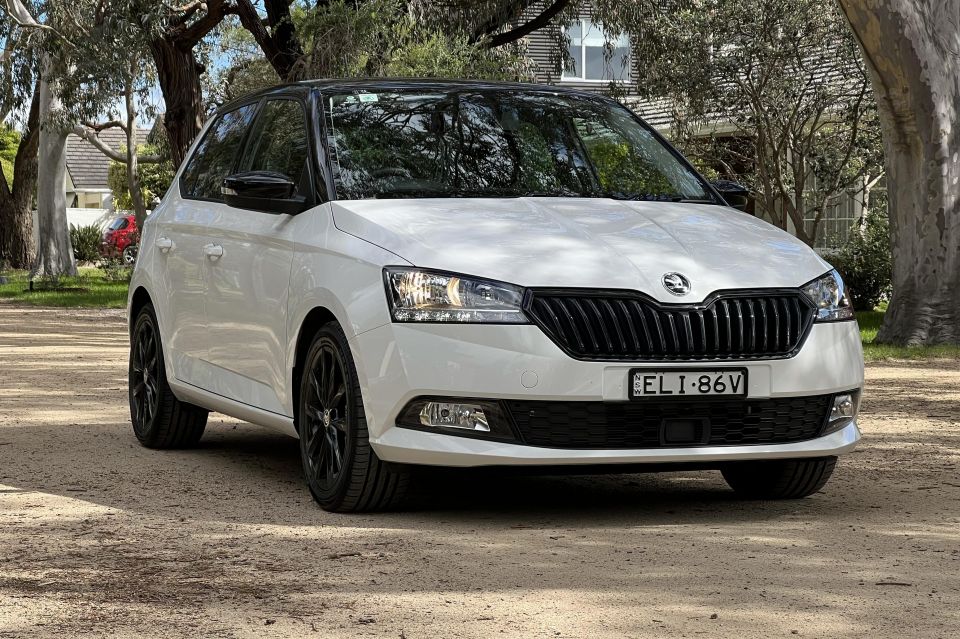
Where expert car reviews meet expert car buying – CarExpert gives you trusted advice, personalised service and real savings on your next new car.
It’s getting long in the tooth, but the Skoda Fabia is still a solid city car.
The engine packs more of a punch than you’d expect of a 1.0-litre, and it still handles and rides well for such a compact hatchback. Although it’s a bit dowdy, the interior also majors on practicality.
I’m not sure it’s solid enough to justify quite being priced quite so close to the range-topping Polo’s drive-away price, though.
Yes, $2000 isn’t a small chunk of change at this end of the market, but it’s change worth spending if you want a more modern Volkswagen Group city car. If the Premium Pack was standard, you’d be looking at a Run-Out special edition worth snapping up before it’s gone.
As it stands, the final Fabia for Australia feels slightly too expensive.
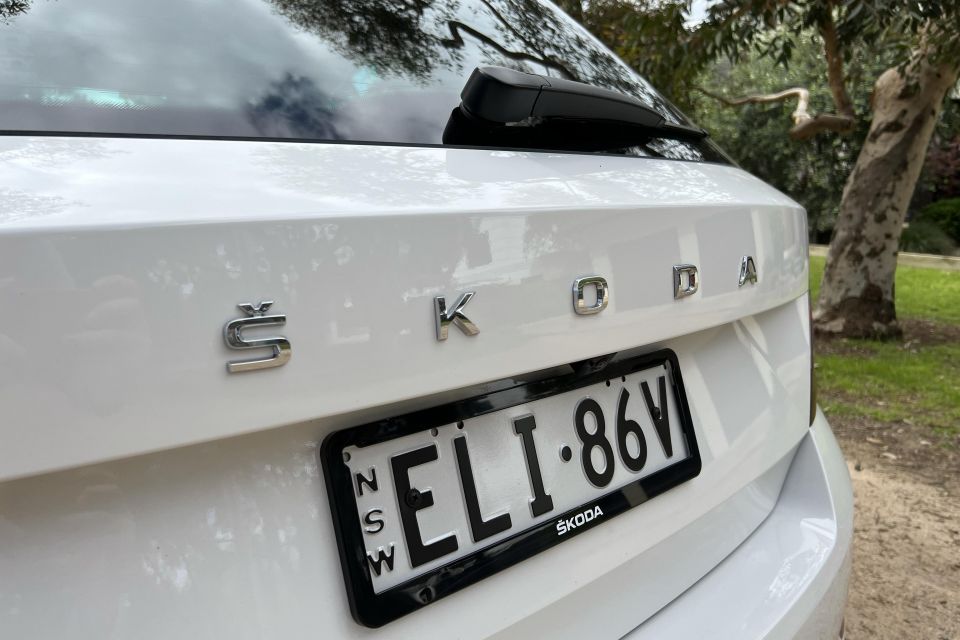
Click the images for the full gallery
MORE: Everything Skoda Fabia
Where expert car reviews meet expert car buying – CarExpert gives you trusted advice, personalised service and real savings on your next new car.
Scott Collie is an automotive journalist based in Melbourne, Australia. Scott studied journalism at RMIT University and, after a lifelong obsession with everything automotive, started covering the car industry shortly afterwards. He has a passion for travel, and is an avid Melbourne Demons supporter.


Damion Smy
2 Days Ago
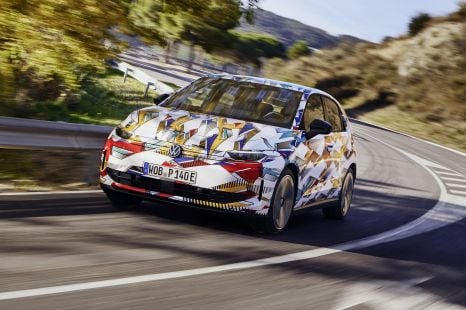

William Stopford
9 Days Ago
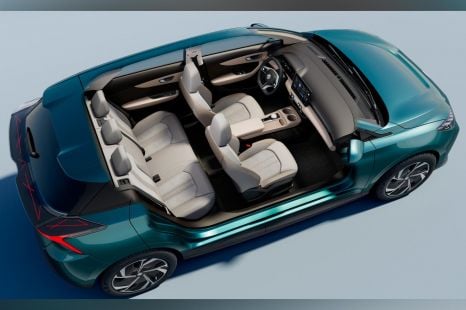

William Stopford
10 Days Ago
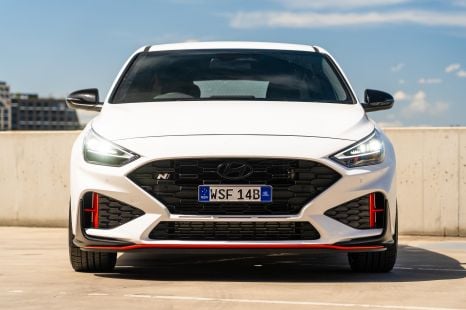

William Stopford
16 Days Ago
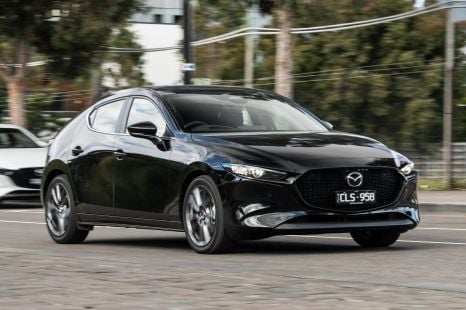

Josh Nevett
25 Days Ago
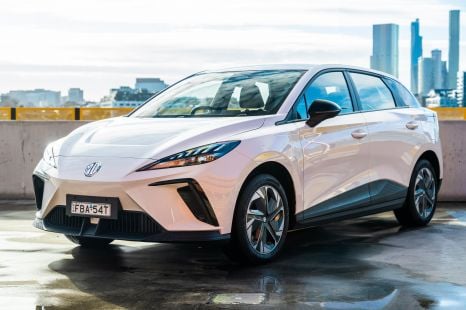

William Stopford
1 Month Ago